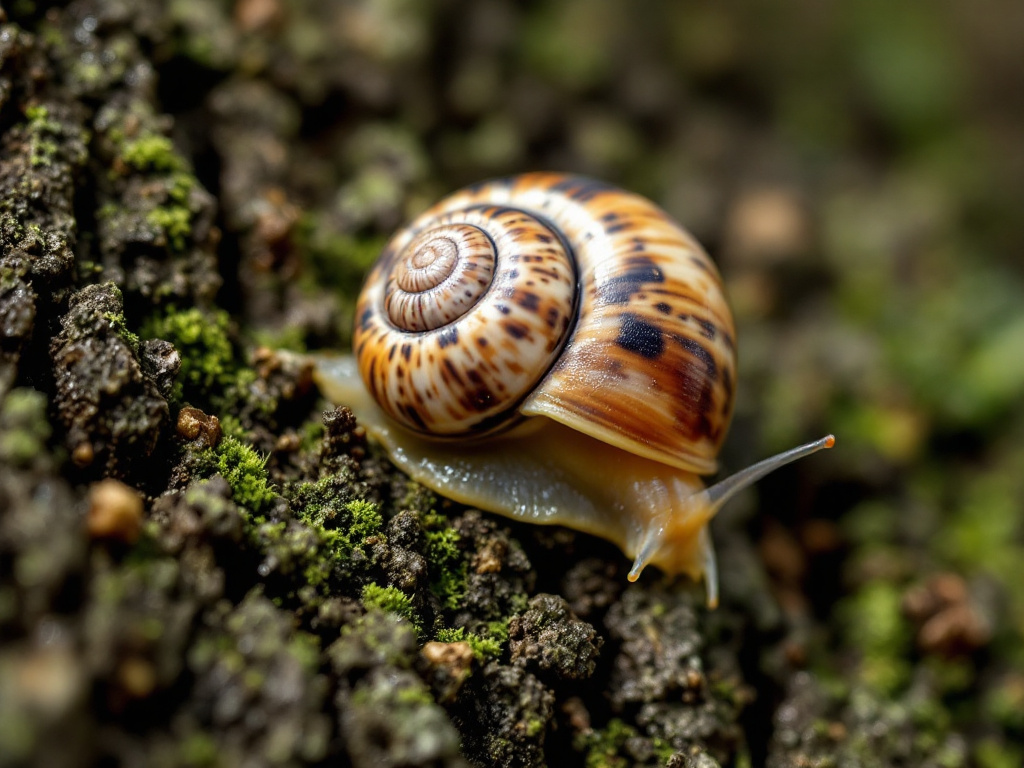Image generated by flux-ai.io & content generated by ChatGPT Version 4o-mini
Florida’s Unique Tree Snails: Protecting Our Natural Treasures
In the lush green canopies of Orange County, Florida, a special group of residents is quietly going about their lives—tree snails. These fascinating creatures, part of the Bulimulidae family, are not just ordinary snails; they play a crucial role in our local ecosystems. Recent research has shed light on their behavior, habitat needs, and the threats they face, highlighting why it’s essential for us to protect these unique inhabitants of our environment.
What Are Tree Snails?
Tree snails are unique gastropods, meaning they are soft-bodied animals with shells, often found high up in trees rather than on the ground like their more common cousins. They thrive in warm, humid environments—perfect for our subtropical climate in Orange County. These snails feed primarily on epiphytic growths, which include algae, fungi, and lichens found on tree bark. By munching on these organisms, they help maintain the health of the trees and the overall ecosystem.
Why Are They Important?
The presence of tree snails indicates a healthy environment. They contribute to biodiversity, which is essential for ecosystem stability. In return, they receive a safe habitat high above the ground, where they are less likely to be preyed upon. However, not all tree snail species are thriving. For example, the Orthalicus reses, one of the species found in Florida, is federally listed as threatened due to habitat destruction and its limited range. This means that without proper attention and care, we could lose these beautiful creatures forever.
Local Connections
Residents of Orange County can often spot these snails in their own backyards, especially if they have citrus trees or native plants. The Florida tree snail, Liguus fasciatus, is famous for its colorful shells, which can be seen on smooth-barked trees. Not only do these snails add to the beauty of our natural surroundings, but they also serve as indicators of the health of our local flora.
As urban development continues to expand in Orange County, it’s vital to remember the impact on these small yet significant creatures. With an increase in population and housing developments, the natural habitats of tree snails are at risk. This not only threatens their survival but also affects the overall health of our ecosystems.
How Can We Help?
As residents, there are several ways we can contribute to the conservation of tree snails and their habitats:
-
Plant Native Species: Encourage the growth of native plants in your gardens. This provides food and shelter for tree snails and other local wildlife, attracting diverse species and enhancing local ecosystems.
-
Avoid Chemical Pesticides: Chemicals can harm not just the pests they target, but also beneficial creatures like tree snails. Opt for organic gardening methods whenever possible, aligning with responsible pest management practices that protect wildlife.
-
Educate Others: Share information about tree snails and their importance with friends and family. The more people know, the more likely they are to care.
-
Support Local Conservation Efforts: Engaging with local environmental organizations can help amplify efforts to protect these unique species and their habitats. Volunteering for local initiatives can also enhance community involvement in conservation.
Conclusion
Tree snails may be small, but they are vital components of our local ecosystem. Protecting them helps ensure the health of our environment for future generations. As Orange County continues to grow, let’s be mindful of our natural heritage and take steps to preserve the unique wildlife that calls this beautiful area home. By doing so, we not only protect tree snails but also contribute to the rich tapestry of life that makes Florida so vibrant. Let’s create landscapes that welcome wildlife and enhance biodiversity, ensuring a sustainable future for all species.
References
EENY148/IN305: Tree Snails of Florida, Drymaeus, Orthalicus, Liguus spp. (Gastropoda: Stylommatophora: Bulimulidae). (n.d.). Ask IFAS – Powered by EDIS. https://edis.ifas.ufl.edu/publication/IN305

